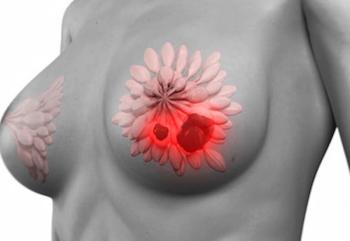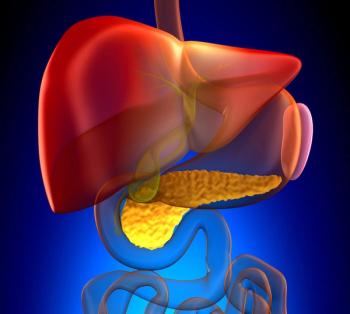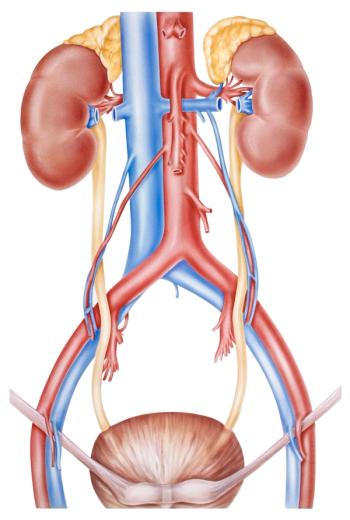
Exploring the Use of Ultra-Hypofractionated RT in Elderly Breast Cancer
The unclear role of hypofractionated radiation in older patients with early breast cancer in prior trials incentivized research for this group.
CancerNetwork® spoke with Bin Gui, MD, a fourth-year radiation oncology resident at the Northwell Health Cancer Institute, about the background for conducting a study to assess ultra-hypofractionated radiation in older patients with low-risk early-stage breast cancer recently presented at the
Gui explained that ultra-hypofractionated radiation was reported to have mitigated local recurrence in 2 clinical trials, the phase 3 FAST-Forward trial (ISRCTN19906132), and an accelerated partial breast irradiation (APBI) trial (NCT02104895).2,3 However, a third trial, the phase 3 PRIME II trial (ISRCTN95889329), disaggregated older patients with breast cancer into 2 groups; 1 cohort received radiation, and another was not assigned to radiation.4 He concluded by explaining that the trial he presented was to better assess whether similar efficacy would be observed for older patients as they had in the FAST-Forward and APBI trials.
The phase 3 FAST-Forward trial randomly assigned patients 1:1:1 to receive either 40 Gy in 15 fractions over 3 weeks, 27 Gy in 5 fractions over 1 week, or 26 Gy in 5 fractions over 1 week. Results from the trial found that the hazard ratio (HR) vs 40 Gy in 15 fractions was 0.67 (95% CI, 0.38-1.16) with 26 Gy in 5 fractions across 1 week.
Additionally, the APBI trial randomly assigned patients with early-stage breast cancer 1:1 to receive either whole-breast irradiation (WBI) or APBI. Results found relatively insignificant differences between WBI and APBI for outcomes like ipsilateral breast tumor recurrence (IBTR) rate (2.5% vs 3.7%).
The phase 3 PRIME II trial randomly assigned patients over 65 years with early-stage breast cancer 1:1 to receive whole-breast irradiation or no irradiation. Results from the trial showed that cumulative breast cancer recurrence was significantly higher in the no radiation group than the radiation group (9.5% vs 0.9%). However, the overall survival rate at 10 years was 80.8% and 80.7%, respectively, indicating that radiation omission did not have a significant detriment on long-term survival.
Transcript:
The ultra-hypofractionated radiation—which means [approximately] a week of radiation treatments, generally in 5 fractions—has been shown to be effective in controlling local recurrence in [patients] with early-stage breast cancer per the phase 3 FAST-Forward trial and the accelerated partial breast irradiation [APBI] trials. However, its role in the subset of older [patients] was not specifically reported, and as we know from the phase 3 PRIME II study, it offers an option for older [patients] to omit the radiation. However, many older [patients] have diminished compliance with endocrine therapy, which was crucial in the PRIME II study.
[Our] study aimed to investigate the initial outcomes of ultra-hypofractionated radiation in older patients with low-risk breast cancer who were potential candidates for omission of radiation.
References
- Gui B, Ojo O, Ottensoser L, et al. Ultra-Hypofractionated Radiation in Older Patients with Low Risk Early-Stage Breast Cancer. Presented at the 2024 American Society for Radiation Oncology (ASTRO) Annual Meeting; September 29 – October 2, 2024; Washington, DC. Poster 2683
- Brunt AM, Haviland JS, Wheatley DA, et al. One versus three weeks hypofractionated whole breast radiotherapy for early breast cancer treatment: the FAST-Forward phase III RCT. Health Technol Assess. 2023;27(25). doi:10.3310/WWBF1044
- Meattini I, Marrazzo L, Saieva C, et al. Accelerated partial-breast irradiation compared with whole-breast irradiation for early breast cancer: long-term results of the randomized phase III APBI-IMRT-Florence trial. J Clin Oncol. 2020;38(35):4175-4183. doi:10.1200/JCO.20.00650.
- Kunkler IH, Williams LJ, Jack WJL, et al. Breast-conserving surgery with or without irradiation in early breast cancer. N Engl J Med. 2023;388(7):585-594. Doi:10.1056/NEJMoa2207586
Newsletter
Stay up to date on recent advances in the multidisciplinary approach to cancer.


















































































